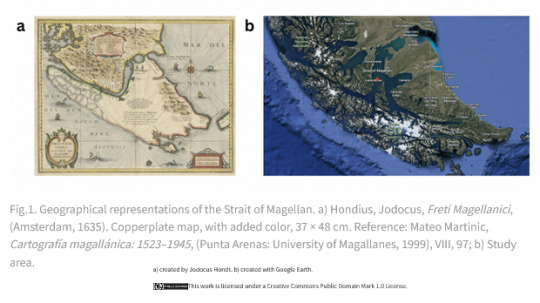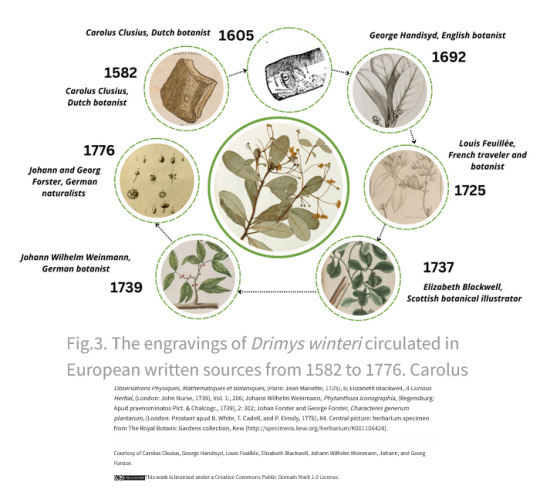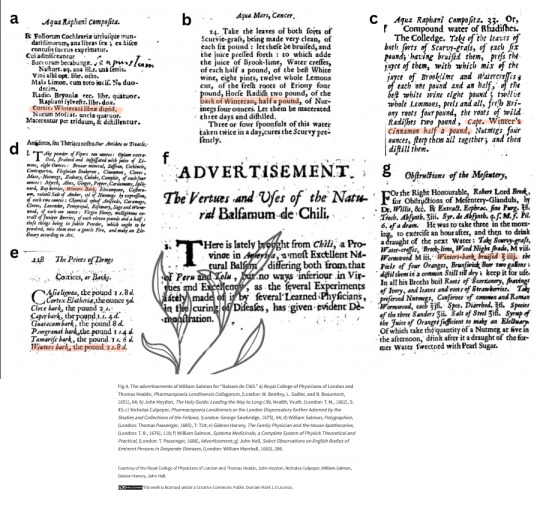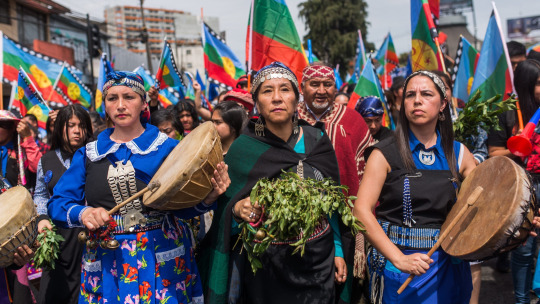#drimi
Explore tagged Tumblr posts
Text

hands on your knees, angelina jolie
btw here's how i rendered this :P
14 notes
·
View notes
Text

wallpaper I did for me and my gf :3
#oc#oc art#original art#digital art#art#illustration#commissions available#drimi#aki furowicz#akiifuwa#akiri#akiri nation#wlw#yuri#gl#lesbians#lesbian artist#lesbian pride
12 notes
·
View notes
Note
and then dream got covid and he gets sick if someone sneezes from across the room 😭
obviously he was a covid warrior With his inmune system he had to ☹️☹️☹️
1 note
·
View note
Text
One of the tasks of the European voyages around the globe from the sixteenth through the eighteenth century was to discover new environmental resources. In 1578, in the Strait of Magellan [...], the English traveler John Winter found a new plant, which was officially named in his honor: Drimys winteri. Nowadays, the ground bark of the species is actively sold as a “Mapuche pepper from the canelo tree.” This is a popular commercial product, which represents one of the recent gastronomic symbols of modern Chile.
In Mapudungun, the language of the Mapuche people -- one of the Indigenous communities [...] in central and southern Chile and southern Argentina -- the tree is called foye. The Mapuche [...] have used it for funerary rituals and medicinal purposes [...]. In the seventeenth century, the Chilean writer Francisco Núñez de Pineda y Bascuñán and the Spanish Jesuit Diego de Rosales [...] reported [...] [medicinal] Indigenous uses of the plant. Nevertheless, their manuscripts were not published until the end of the colonial era. [...] [S]ailors considered Drimys winteri a food spice, since it had a similar taste to pepper (Piper nigrum) or cinnamon (Cinnamomum verum). The tree’s bark was also used as a remedy against scurvy [...] during long travels. At the same time, European scholars did not report any use of the plant among the Indigenous communities [...].

The exclusion of Indigenous and local knowledge was also supported in the Natural History of Chile [...], published [...] in 1646. According to sailors’ reports, Ovalle stated, there is a tree [...] called canelo, similar to pepper and cinnamon. European descriptions of Drimys winteri were primarily based upon the records of navigators, who emphasized analogies with cinnamon in order to boost sales of the product. [...] Colonial botanists mainly stressed the similarity of Drimys winteri to cinnamon. French botanist and traveler Louis Feuillée, among others, classified the specimen within European plant taxonomy as Boigue cinnamomifera, consciously evoking the taste and color of cinnamon. [...]

In the Natural History of Chile, Jesuits presented canelo to a European audience, stressing the analogy to the European knowledge system. [...] At the end of the seventeenth century, the British physician William Salmon and booksellers Thomas Passenger and Ebenezer Tracy began to sell a special product by the name of “Balsam de Chili.” The remedy was advertised as being similar to “Balsam de Peru,” a famous panacea in that period.
The miraculous ingredient in this balsam, reported to be a “small tree of Chili,” was probably Drimys winteri.
In the same period, the studied plant, known in England as Winter’s Bark or Winter’s cinnamon, was used by English apothecaries in many recipes (Figure 4).

Nevertheless, the Chilean native plant was often confused with cinnamon and Canella alba (Canella winterana). After [...] 1693 [...] Balsam de Chili gradually disappeared from the English market.
During the colonial period, Indigenous and local environmental knowledge about Drimys winteri was partly ignored by European voyagers. The constructed knowledge system circulated in the European written sources was mainly based on travelers’ reports [...]. [E]xclusion of Other ecological knowledge might represent [...] the inability to give specific meaning and importance to plants for the European audience. The environmental ignorance surrounding Drimys winteri supported the European epistemic hierarchy, entrenched coloniality, and promoted the persisting unbalanced relationship between different forms of knowledge. The Drimys winteri sold nowadays with the Spanish name canelo, as a food spice similar to pepper and related to Mapuche culture, represents one of the outcomes [...]. Consequently, [...] [this] was not a temporary process. It [...] has long-term effects and still affects contemporary knowledge circulation about Drimys winteri in Chile.

---
Images, captions, and text by: Matteo Sartori and Julia Prakofjewa. "Drimys winteri: Circulation of Environmental Ignorance in European Written Sources (1578–1776).” Environment and Society Portal, Arcadia (Summer 2023), no. 15. Rachel Carson Center for Environment and Society. [Bold emphasis and some paragraph breaks/contractions added by me.]
25 notes
·
View notes
Text

~ Drimys winteri creature ~
2 notes
·
View notes
Text
Separatist and irredentist movements in the world
Wallmapu
Proposed state: Wallmapu
Region: Buenos Aires, Chubut, Córdoba, Entre Ríos, La Pampa, Mendoza, Neuquén, San Juan, and Santa Fe Provinces, Argentina; Araucanía, Coquimbo, Libertador General Bernardo O’Higgins, Los Ríos, Los Lagos, Maule, Ñuble, Santiago Metropolitan, Valparíso Regions, Chile
Ethnic group: Mapuches
Goal: independence
Date: 1600s
Political parties: -
Militant organizations/advocacy groups: Coordinadora Arauco-Malleco, Consejo de Todas las Tierras, Resistencia Ancestral Mapuche
Current status: active
History
1502 - Europeans first arrive in Argentina
1520 - the first Europeans arrive in Chile
1540 - beginning of the colonization of Chile
1546-1641 - Arauco War
1810-1818 - Argentine War of Independence
1810-1826 - Chilean War of Independence
1813 - Indigenous Settlement Commission
1825 - Treaty of Tapihue
1861-1883 - occupation of Araucanía
1870-1880 - Indigenous Reservations Law
1962-1973 - Chilean land reform
1990 - creation of the Consejo de Todas las Tierras
1993 - Indigenous Peoples Act
1998 - foundation of Coordinadora Arauco-Malleco
2009 - formation of Resistencia Ancestral Mapuch
2010-2011 - hunger strikes
The colonization of Argentina and Chile began between 1535 and 1540, after which they became part of the Spanish Empire. In the long Arauco War, the Mapuche people fought against the Spaniards for their freedom and lands. They eventually won and reversed Spanish colonization of Araucanía.

After Chile achieved independence in 1844, the peace between the Mapuche and the new government evaporated, since the latter did not recognize the Mapuche as independent. Eventually, the government did so through the Indigenous Settlement Commission and the Treaty of Tapihue, but the Chilean population continued to acquire Mapuche lands.
The passing of the Indigenous Reservations Law led to mass rebellion by the Mapuche people in 1870 and 1880. Subsequently, the Chilean government started the “pacification” of Araucanía, which was essentially an occupation of the region. Salvador Allende’s government restored some Mapuche land, but the situation was reversed under Pinochet’s dictatorship.
When democracy was restored, the Chilean government passed the Indigenous Peoples Act to recognize Mapuche participation and land, cultural, and development rights, but most Mapuches feel disappointed. Since then, numerous incidents have happened in Araucanía, including hunger strikes and attacks against both sides.
Mapuche people
There are around 1,950,000 Mapuches, of which 90% live in Chile. They speak Mapuche, an Araucanian language, and Spanish.

Mapuche people mostly practice Christianity, but also retain some of their traditional beliefs. Their economy is based on agriculture, and they are organized under extended families.
Vocabulary
(Mapudugun - Spanish - English)
Arkentinia - Argentina - Argentina
Aukiñ Wallmapu Ngulam - Consejo de Todas las Tierras - All Lands Council
Chili - Chile - Chile
Mapuche kewan - conflicto mapuche - Mapuche conflict
Mapudungun - Mapuche language
wall mapu - territorio circundante - surrounding area
Wenufoye - canelo del cielo - sky’s canelo (Drimys winteri)
4 notes
·
View notes
Text
Almost drimy texted Mt BOSS but I look so good in my outfit I lokve being a little puppy guy at the lesbian barrrrrr shoutout Shelby
0 notes
Text



Canelo / Foike (Drimys winteri) Papudo, Chile
1 note
·
View note
Note
drimi drimi.... i wish he maybe posted at least some snaps with maybe idk how his friend congratulated him i eope hes doing well and have a beautiful bithcday
tbh i just hope he’s having a nice day relaxing at home bc by the sound of it he needs it 😭
0 notes
Text


a real convo i had with my girlfriend a while ago
#aki#drimi#akiri#ocs#original art#original character#garfield#im the garfield obsessed one if you couldn't tell
6 notes
·
View notes
Text


akiri nui dolls tehee
often bought together do not separate them
#akiri#akiri nation#drimi#aki furowicz#art#original art#oc#oc art#original character#commissions available#oc artwork#oc artist#nui doll
4 notes
·
View notes
Note
https://www.tumblr.com/floridacracker/754673058822946816?source=share drimi
they just deleted this 😭
0 notes
Text
La flora de la Región de Magallanes y de la Antártica Chilena, es única y diversa debido a las condiciones climáticas extremas y al aislamiento geográfico de la región. Aquí hay una descripción general de algunos de los tipos de flora que se encuentran en esta región:
Bosque Magallánico: Dominado por especies como el lenga (Nothofagus pumilio), el coihue de Magallanes (Nothofagus betuloides) y el ñirre (Nothofagus antarctica), estos bosques son característicos de la región. Son parte del bosque subantártico, adaptados a las condiciones frías y ventosas.

Turberas y Humedales: Las turberas y los humedales son ecosistemas importantes en la región de Magallanes. Están compuestos por una variedad de musgos, líquenes y herbáceas adaptadas a las condiciones húmedas y ácidas.

Estepa Patagónica: En áreas más abiertas y menos boscosas, la estepa patagónica domina el paisaje. Aquí se encuentran plantas como el calafate (Berberis buxifolia), el neneo (Mulinum spinosum) y diversas especies de coirón (Festuca spp.).

Vegetación Costera: A lo largo de la costa, se pueden encontrar comunidades vegetales adaptadas a las condiciones salinas y ventosas. Entre ellas se incluyen especies como el calafate costero (Luma apiculata), el tineo (Weinmannia trichosperma) y el canelo (Drimys winteri).

Flora Endémica: La región de Magallanes alberga varias especies de plantas endémicas, es decir, que solo se encuentran en esta área y en ninguna otra parte del mundo. Estas incluyen especies como la orquídea Chlorea magellanica y la planta carnívora Drosera uniflora.


0 notes
Text

Rispondente's Cosplay Day
Renjuuzn as Nctjisungy
First Impression:
Karena Jisung baru ganchar, dulu fi ke dia tuh lucu dan kalem. GAK TAU YA KAYA PERNAH LIAT DIA DI MANA GITU... intinya seneng ada anak drimis lagi di rispon. Biar gak digangguin bang arthur sendiri. Bang arthur drimngitis bjir. 😮💨
Presentation:

Interaction:
Tap here

Mission accomplished!
0 notes
